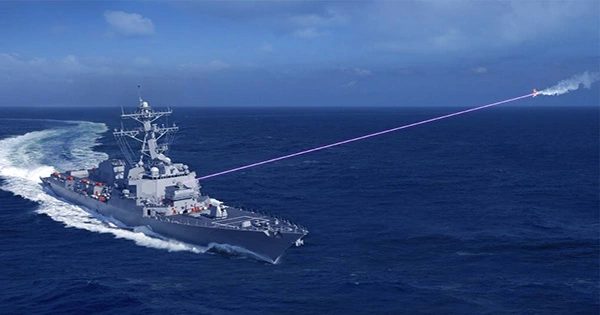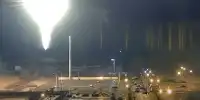The Layered Laser Defense (LLD), an all-electric laser weapon created and built by Lockheed Marting, was successfully tested for the first time in February by the US Navy. This weapon is designed to disable or even destroy incoming subsonic missile targets in the air or on the sea. The LLD has the ability to cause optical dazzle, deactivate sensors, and heat up a target to the point of annihilation. The LLD tracked and shot down fixed-wing aerial vehicles, quadcopters, and even high-speed drones that were a proxy for cruise missiles moving slower than the speed of sound in tests conducted by the Office of Naval Research (ONR) at the US Army’s High Energy Laser Systems Test Facility at White Sands Missile Range in New Mexico.
In a statement, Chief of Naval Research Rear Adm. Lorin C. Selby said, “Innovative laser systems like the LLD have the potential to alter the future of naval combat operations.” “They equip the fleet with transformative capabilities, counter a variety of threats, and deliver precision engagements with a deep magazine to complement existing defensive systems and boost sustained lethality in high-intensity battle,” says the press release. The device is fitted with sophisticated optics to both observe and follow a target, as well as focus the laser beam to varying degrees of efficacy, in order to be so efficient. An artificial intelligence component is also included in the LLD to help in tracking and targeting.
This isn’t the first time the Navy has commissioned and tested a laser weapon. The concept of such weapons has existed for many years. For a variety of reasons, direct energy weapons have been a hot topic of research. For example, the guns would not require ammo, and the cost per engagement may be quite minimal. Especially with an all-electric system like the LLD, which functions as long as the ship it’s installed on has electricity. However, laser guns haven’t always been as effective.
“During the 1980s, the Navy conducted comparable studies, but using chemical-based laser technology, which posed considerable logistical challenges for fielding in an operational context. And, in the end, neither the fleet nor any other Service used those types of lasers,” revealed Dr. Frank Peterkin, ONR’s directed energy portfolio manager. The LLD is smaller and more efficient than previously tested devices, making it a more appealing armament system than earlier laser techniques. It’s being developed by teams that believe it’s a peek into the future of weaponry. There are no plans to field the LLD at this time, but there are plans to field directed energy weapons as soon as this year.















